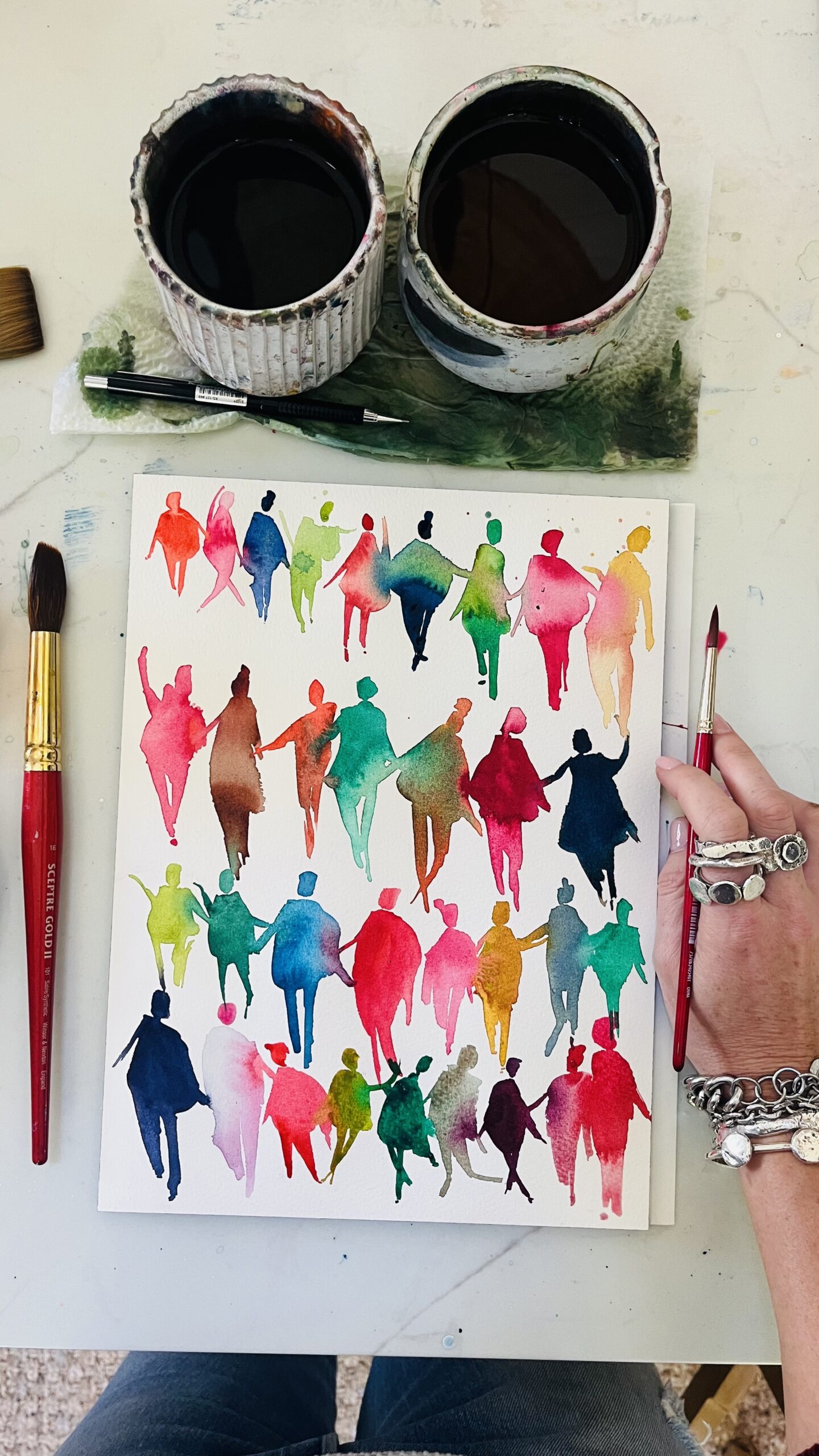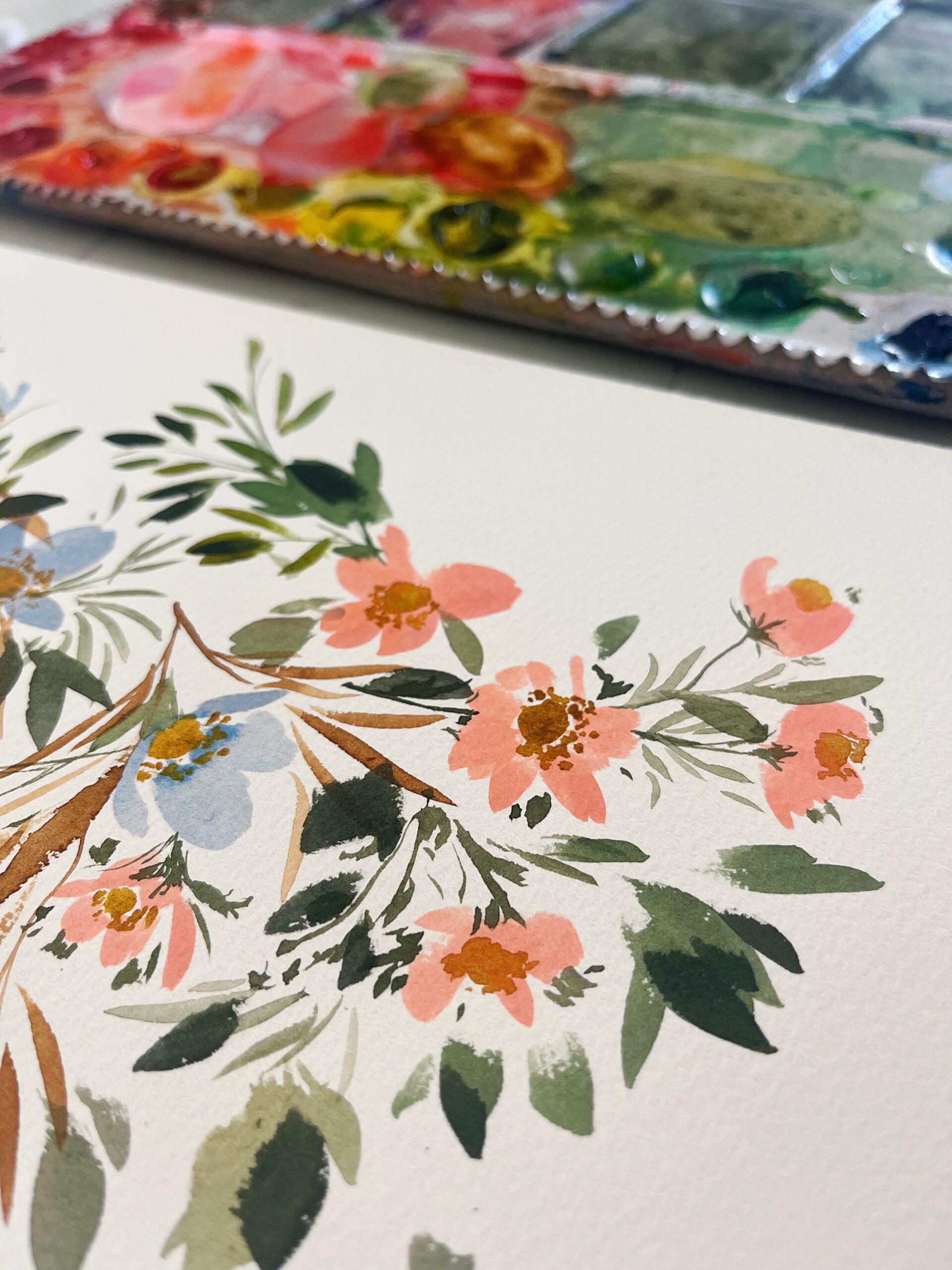Pricing woes got you down? Not sure what to charge and whether you should price your work based on an hourly rate or flat rate?
In this post, I dive into the questions you should be asking a prospective client and the EXACT formula you should use to base your pricing! Every job and industry is different, so this method will help you determine the cost of design jobs, editorial, commissions and more! First, let's talk about the two approaches to pricing: hourly rate and flat rate.
Comparing hourly vs. flat rate
Hourly
Hourly rate is great for the picky clients.
Constant revisions and changes? Hourly rate helps reign in those revision happy clients! While it's hard to determine upfront if a prospective client is going to be picky or not, you get better at this over time.
Hourly rate works well for some custom work.
Similar to the statement above, custom work can become incredibly tedious. Some jobs may work best with an hourly rate, vs. flat rate for this reason.
Hourly rate doesn’t work well for efficient and more experienced workers.
While hourly rate can work well with custom work, it can also become a punishment for the workers who are fast or efficient at their craft. Just because you can do something 3x faster than the next person, doesn't mean you should charge less!
Hourly rates can get muddy and confusing and cause headaches.
With hourly rates, you will need to constantly be updating the client on if you need more time and getting that approval. It can get incredibly messy and at times, end poorly if you don't keep the client up to date!
Flat rate
Less confusing for client.
The price is the price! No confusion or back and forth on if you're being paid for your time.
Doesn’t punish efficiency.
As mentioned above, just because you can do something quicker or more efficiently doesn't mean you should be paid less!
Can be an issue if the client is picky or you under quote.
In the case of constant revisions and tweaks, hourly rate makes more sense. It reigns in the client and pays you for the extra time you put in. HOWEVER, with flat rate, make sure you add in your contract that the client receives X amount of revision rounds, then after that they must pay X hourly rate for additional revisions!
After considering the pros and cons and your particular business, determine YOUR pricing formula.
This formula is based on your expenses x expertise x time.
Every freelancer, artist, business owner, etc. is going to have a different price based on their own expenses, how efficient they are and their experience or expertise. HOWEVER, doing competitive research in your industry to get a sense of what the market is paying for similar goods and services is a very good idea. This is much easier to do for products based businesses vs. service. You can obviously look at some online shops and get a sense for what similar products are being sold for, but not every artist, designer, etc. is listing their prices online. So, this is where it takes some extra digging and some trial and error.
- Google the HECK out of your industry. Find blog posts on what other people are charging, etc.
- Remember, it is ultimately up to YOU to determine and put a price on your time and value. But beginners: be wary of undercharging. This waters down and weakens the market, which will in the long run harm you.
So, let’s say I’m an artist and someone is asking me to paint a custom piece for their home. I’d estimate the amount of time I think it’d take me, based on the details of the job, then add that up with the cost of goods (always add tax and mark it up) and then add that all up with my VALUE or expertise. Someone who is brand new on the scene should not be charging what someone with 15 years experience and an incredible reputation should be. For example, a more high end hourly rate for this particular job would be around $250/hour. Where as someone who is brand new could get away with charging $30/hour! Because of the experience and value!
Once you’ve done the research and nailed down your hourly rate, decide whether the job would be best quoted hourly or flat rate.
So, just because you have this hourly rate now, doesn’t mean I’m saying to charge hourly. Most designers take into account the hours they’ll put into a project when coming up with a price and base their flat rate upon that estimate. However, this rate that you come up with, whether it’s hourly or flat, is just part of the way to quote a project, and shouldn’t be the only defining factor.
Consider the terms, usage and rights being requested
When you create something, you are the owner of that work. When someone hires you for a logo let’s say, the client is most likely going to use it on their website, printed material like business cards, and products, etc. so therefore, the price should be more substantial than say if you were the same designer hired to do one spot illustration (not a logo), web only.
So here are some questions to ask yourself and your prospective client:
- How long does the client want to use the artwork for? One month? One year? Two years? Five years? In perpetuity?
- What is the client looking to use it on? Are they looking for rights on print only? Web and print? Slapped up on a billboard?
- How big is the client/company? How many potential eyeballs will be seeing this work?
Generally speaking, a ballpark hourly rate for illustration work is $100-$250 an hour. Obviously give or take based on the experience. Someone who’s a complete noob may even charge less than that, but let’s say a client came to you and asked for a spot illustration of some sort of floral piece. This would be used for editorial (magazine only), and the client is a local magazine. Nothing major. Let’s say the illustration they’re looking for would take you about 2-3 hours. And they don’t send over whether the illustration will be used on the cover, or interior if it’s a half page, full page, or a full spread. So in this scenario, you’d price out a few usage scenarios:
Cover Illustration
Full Page Spread
Single Page
Spot Illustration
The obvious point here is that A LOT more people are going to be seeing the illustration on the cover page, vs. a smaller illustration on a segment within a page. Right? Along with that, this is a local magazine, not People, so we need to do some research on similar price points for similar types of work! Use Graphic Artist's Guild Handbook of Pricing and Ethical Guidelines (This is an affiliate link, which means that if you click on this, I’ll receive a small commission at no extra cost to you. And you can trust that I only share products I love. This helps to support my work so that I can continue to make valuable content for you. Thank you for the support!) as a ballpark, because every scenario will be different. This book is an incredible resource for every freelancer and business owner!
If you're a stationery designer, calligrapher, etc. check out my course Pen to Press for more info on pricing and all things client experience!







Hi Jenna! Thanks for sharing on this complex topic. Sometimes I have a hard time believing my work and expertise are worth what I should charge. One question: if you have clients you do ongoing work for (like over the course of many years) how do frequently do you increase your hourly rates? And how do you communicate that to your clients who give you a lot of consistent work? Thanks!
Hey Rachel! Great questions and not a one-line answer. I’m going to add this to my list for future episodes!